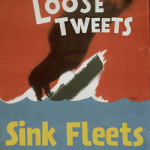If you look after truth and goodness, Beauty looks after herself.
Category: Personal
Reading: Rapt: Attention and the Focused Life
 Not since Mihaly Csikszentmihalyi’s book Flow, have I encountered such a good book about attention that, you guessed it, captured my attention. In Rapt: Attention and the Focused Life, Winifred Gallagher discusses the basic premise that you are what you pay attention to, or to be more precise, what you choose to pay attention to.
Not since Mihaly Csikszentmihalyi’s book Flow, have I encountered such a good book about attention that, you guessed it, captured my attention. In Rapt: Attention and the Focused Life, Winifred Gallagher discusses the basic premise that you are what you pay attention to, or to be more precise, what you choose to pay attention to.
She blends contemporary psychology with modern neuroscience to explain the phenomenon of attention, and debunk common misconceptions about things like multitasking–one second, off to check my twitter feed–ok, now I’m back–what was I saying–oh yeah, something about multitasking. Or was it attention. Get the idea?
Anyhow, the book is replete with cited studies and is well footnoted. Common themes around mindfulness meditation, effective “self-distraction”, and utilizing the “zone” bring the theoretical conversation back to day-to-day life and will undoubtedly make you look at your daily routine differently.
It turns out that Gallagher has also written about one of my other favorite subjects, how our surroundings can impact our thoughts and emotions in The Power of Place. My reading stack just got a little taller.
Gallagher, Winifred. Rapt: Attention and the Focused Life
Painters in the grand style were not concerned with style – they drew with clarity and rigor. Style was born from their work, and just as thought does not think about the sound of its voice nor even the rhythm, but creates them through its act – so they did not … Style must arise naturally from one’s attention to an object and it disappears as the awareness of this attention decreases.
The separation of the sciences and the arts is merely a matter of convention and convenience. But in thinking and acting, man transcends these categories which are simply particular acts. Each one implicitly contains the other.
Remembering NASA’s X-15 gallery at CNET.
Try not to become a man of success, but rather try to become a man of value.
My experience is what I agree to attend to.
Reading: Tribes
 This weekend’s read was Seth Godin’s Tribes, essentially a collection of tidbits on leadership in today’s increasing connected world. The internet has eliminated geography and reduced the costs of communication to nil. Factor in the rise of social networking, and a space for highly leveraged leadership opens up.
This weekend’s read was Seth Godin’s Tribes, essentially a collection of tidbits on leadership in today’s increasing connected world. The internet has eliminated geography and reduced the costs of communication to nil. Factor in the rise of social networking, and a space for highly leveraged leadership opens up.
Seth basically challenges the reader. While some portions seemed a little disjointed, I did appreciate his consistent theme of challenging the status quo and dog-eared this alliteration on leadership:
Leaders create culture around their goal and involve others in that culture.
Leaders have an extraordinary amount of curiosity about the world they’re trying to change.
Leaders use charisma (in a variety of forms) to attract and motivate followers.
Leaders communicate their vision of the future.
Leaders commit to a vision and make decisions based on that committment.
Leaders connect their followers to one another.
And in accordance with the author’s recommendation, it’s sitting ready if you’d like to borrow it.
Godin, Seth. Tribes: We Need You To Lead Us
Business is Both-Brained. What About Your Career?
The discussion of right-brain and left-brain thinking in business is a hot topic, thanks in particular to Daniel Pink’s wonderful book, A Whole New Mind. In the June 2009 issue of the Harvard Business Review, the article Innovation in Turbulent Times covers famous left/right, business/creative partnerships such as David Packard/Bill Hewlett, Pierre Wertheimer/Coco Chanel among others.
The need and effective paring of rational, linear and logical thinking with imaginative, creative, and holistic thinking is as obviously important as it is difficult to do well. I see this all the time working in the web domain of information technology, were engineering, design and project delivery frequently intersect.
While its fun to debate what left or right-brained skills are more important these days, one thing is certain: business is “both-brained”. Consider this poignant excerpt from the HBR article:
Management might need better visioning skills to foster a culture of curiosity and greater risk taking–primarily right-brain activities. Left-brain analytic tools might be needed to steer innovation investments toward the most promising areas. The business might need more creativity to generate ideas, but also analytics to constrain unprofitable projects. The right-brain design process might not be strong enough to transform intriguing ideas into practical products. Or the analytic left brains might need to fund the product pipeline to favor a different mix of large and small bets. Sometimes the products are fine but marketing needs to create stronger, more emotional bonds with customers, or engineers need to boost efficiency and profitability through improvements in cost or quality.
It’s as relevant in the context of a business as it is in a career. In the latter, the challenge is to manage the “partnership” of your two brain hemispheres as well as some of the successful business examples we all admire. As any brief study of neuroscience will yield, nearly everything we do uses both sides of brain. The art is in realizing your strengths or natural “handedness”, and learning to cultivate practices that encourage thinking in new ways.
Perhaps all this makes the most famous both-brainer of them all, Leonardo da Vinci, even more relevant to our demanding modern careers.

